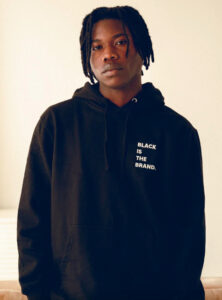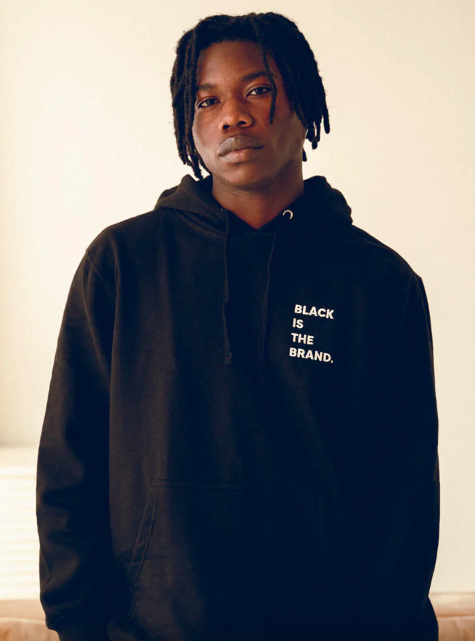Fashion is an art form and is a great way to express yourself. It can also be used to make a statement or support certain causes. African-American culture has influenced many modern-day styles and trends. In this blog post, we’ll explore how African-American heritage has shaped fashion.
African Prints
 African prints are a textile style woven in Africa and used to create clothing. They feature vibrant colors and geometric patterns. The designs often carry hidden meanings. For example, the color blue symbolizes love and happiness while black represents death or sadness. Red, on the other hand, is associated with power and success. The fabric can also be used to communicate with the local community. Traditionally, these fabrics are worn during celebrations. In addition, they can be used to represent a family’s history and culture.
African prints are a textile style woven in Africa and used to create clothing. They feature vibrant colors and geometric patterns. The designs often carry hidden meanings. For example, the color blue symbolizes love and happiness while black represents death or sadness. Red, on the other hand, is associated with power and success. The fabric can also be used to communicate with the local community. Traditionally, these fabrics are worn during celebrations. In addition, they can be used to represent a family’s history and culture.
There are many different types of African print cloth. Some are woven in long strips and stitched together to form a fabric. Others are printed using block printing techniques. The latter type is known as kente cloth and is inspired by traditional kente, a handwoven fabric from 17th century Ghana. Another popular cloth is adinkra, which features symbols that convey traditional wisdom on life and other issues. The kente and adinkra styles are often used to celebrate the achievements of individuals and families.
The versatility of African fabric makes it ideal for fashion and decor. It can be made into clothes, shoes, bags, and other accessories. It can also be used to decorate houses. The fabric is also very durable and can withstand the elements. It can be washed in hot water and will not shrink. However, it should be washed separately to prevent fading or abrasions.
Many women use these African prints to express their heritage and pride in their identity. They can be worn as dresses, skirts, and t-shirts. They can even be used as a cover-up or wrap. In addition, these garments are flattering and comfortable to wear. Many African women also believe that these garments are a form of nonverbal communication and carry their personal stories into the world.
As more people embrace their cultural identity, the use of African prints in American fashion is becoming increasingly common. However, some argue that the use of these patterns is a form of cultural appropriation. While this argument may be valid in some cases, it is important to remember that these fabrics are a source of pride for the people who created them. In addition, they have been a major part of Black American culture since the civil rights movement. In fact, some of the most famous fashion models in the world are Black women who use their style to support African-American causes and businesses.
Black History Month Shirts
Many fashion designers are influenced by African American culture. One way that this is evident is through the use of unique fabrics and prints. For example, African print fabric was inspired by beautiful artwork on ceremonial robes and is known for its bold colors and patterns. Today, you can find these prints on t-shirts, dresses, and skirts. These designs are eye-catching and can be worn to celebrate black history month or any other occasion.
Throughout history, black culture has had an immense impact on fashion and style. It has shaped popular trends and continues to influence contemporary fashion. In addition, the black community has contributed to various social movements, including those aimed at inclusion and equity in retail and fashion.
Every February, it seems like virtually every fashion brand launches a new Black History Month initiative. While most of these initiatives end up being empty marketing ploys, Old Navy aims to be the exception. The beloved retailer launched Project WE in January 2021 as a platform to amplify diverse voices and celebrate Black culture.
To commemorate this special month, the company invited a trio of Black artists to create unique designs for t-shirts. Temi Coker, Lo Harris, and Destiny Darcel all approached the design process in their own ways. But all three creatives echoed the same message: we should be celebrating Black history and culture all year round.
The collection features tees, dresses, and skirts that reflect different aspects of black history. For example, one shirt depicts a portrait of Africa in tribal colors and patterns. Another tee honors the African American Civil Rights movement. And finally, a long-sleeve tee is a tribute to black athletes.
Aside from shirts, the collection also includes a wide range of accessories. For example, you can find a wide selection of African-inspired jewelry and headwear. Many of these items are made by local artisans and are the perfect way to show your support for Black history and culture.
The sneaker culture is another trend that originated from the black community. This trend has grown in popularity and is now considered part of casual fashion. It’s a great accessory to pair with your favorite t-shirt or dress.
African Gowns
Fashion has always been a tool for expression of one’s culture and identity. Whether it’s a hat, neck beads or a full ensemble, clothing can convey a great deal of information about a person’s worldview, social standing and beliefs. For Africans, adornment and clothing have been used to mark the transition from childhood to adulthood, commemorate life events, signal a change in status or to communicate messages about one’s relationship with God. The variety of adornments and outfits in Africa is vast and can be either simple or complex. A wrapper, body paint and uncomplicated hairdo exemplify a simple ensemble while a formal ceremonial gown or robe with an elaborate head covering, jewelry and other accessories represents a more complex one.
Although the majority of Africans wear traditional robes and dresses to celebrate various ceremonies, there are many ways to show your support for Africa without having to purchase a full outfit. There are a number of hoodies, shirts and dresses that showcase the unique patterns found in African dress. You can also find a wide selection of shoes, hats and scarves that are designed to complement African clothing. Many people choose to pair these accessories with a dashiki, a traditional West African shirt worn as an overcoat or a full-length garment. It is often worn with a kufi, or brimless hat and a gele, or headscarf.
Those who choose to purchase African clothes for their children can find a variety of styles that are both stylish and comfortable. These garments are ideal for kids who want to show their love of the African culture. They can be worn for school or when they are playing with friends. There are even a few designers who make clothes specifically for children that incorporate African prints and other elements of the African culture.
There has been a recent increase in the use of African designs in American fashion. While there are some who claim that this is a form of appropriation, the majority of people simply enjoy wearing these designs because they make them feel good. The truth is that it would be nice if more people were aware of the origins of these designs. It’s not only about being aware of where these designs came from, but also about understanding the history behind them.
Streetwear
Many of the fashion trends and styles that define streetwear today were created in urban communities. These fashions are influenced by graffiti, skateboarding, and surfing and have become the latest style for a broad range of youth subcultures. Many of these styles can also be found in the latest high-fashion collections. Some of the most popular fashion trends include oversized clothing and logos. In recent years, many luxury brands have embraced the streetwear trend and are creating their own versions of this casual style.
Some of the most popular styles in streetwear are hoodies, hats, and sneakers. These pieces are comfortable and stylish and can be worn with almost any outfit. They are also often made from durable materials that can stand up to heavy wear and tear. Streetwear is a lifestyle that celebrates individuality and freedom of expression. It is a movement that encourages young people to be themselves and not conform to social norms. It has been a source of empowerment for young people around the world.
It’s important for fashion brands to understand the streetwear culture and the people behind it. These young consumers are eager to engage with brands that offer them authentic, culturally relevant products. In fact, they want to see the brands they support take a stand on social issues that are important to them. This type of engagement is crucial to maintaining the brand’s integrity and credibility.
While many people cite Supreme and Stussy as the originators of streetwear, there is more to this movement than just high-fashion. In truth, hip hop and music are the roots of streetwear. The style was first seen in the 1980s when artists like NWA and Run DMC began to rap about the style. In this way, the style grew and evolved from hip hop to California surf and skate culture and eventually into what we know as modern day streetwear.
These days, streetwear is one of the most striking retail and fashion trends to hit the industry. It involves the production, promotion, and sale of casual fashion in ways that bypass traditional retail channels. These new sales and distribution methods are based on the idea that customers will be rallied via social media to purchase limited edition products. This creates a tight-knit and cult-like relationship between the brands and their consumers.
